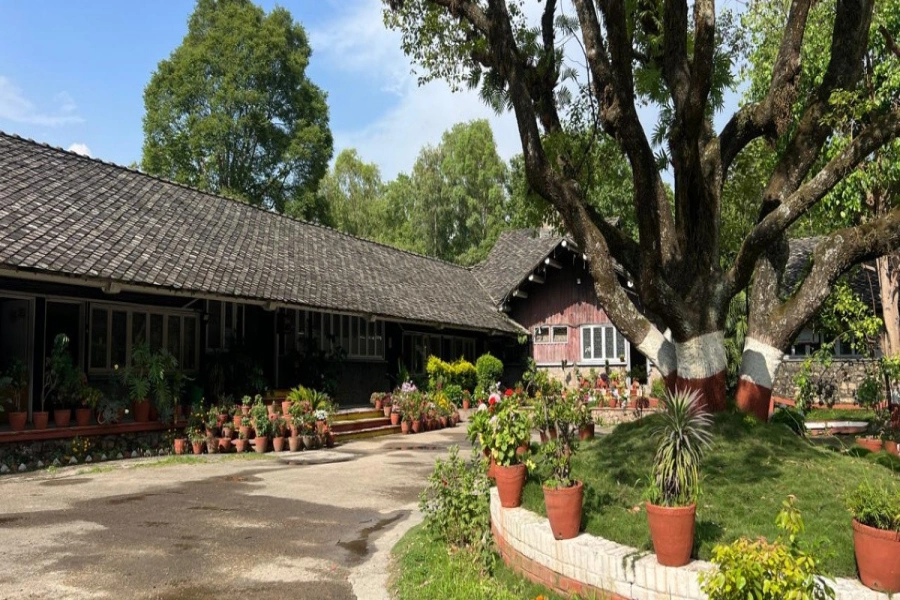The Convention on Biological Diversity gives a formal definition of biodiversity as “the variability among living organisms from all sources including, inter alia, terrestrial, marine and other aquatic ecosystems and the ecological complexes of which they are part; this includes diversity within species, between species and of ecosystems”. Ecosystem forms the foundation of the vast array of ecosystem services that critically contribute to human well being.
Biodiversity boosts the productivity of ecosystem where each species, no matter how small, has an equal and important role to play. Greater the diversity, greater will be the natural sustainability for all the life forms. Though there might be struggle for ‘survival of the fittest’ within a given species, each species depend on the services provided by other species to ensure survival of all.
Herpetofauna, the most overlooked group of vertebrate animals, comprise of amphibian (caecilians, newts, salamanders, frogs and toads) and reptile (crocodiles, turtles, geckos, skinks, lizards and snakes). Despite living in closer proximity with the mankind, they are the most misunderstood creatures for the human beings. Because of their unique physical adaptation features, they are sometimes even considered as ugly. They are least known and studied, not only in the context of Nepal but throughout the world. The publication “Amphibian and Reptiles of Nepal” by Schleich and Castle (2002) provides an account of 50 amphibian and 123 reptiles.
Dr Shekhar Koirala meets Deuba to discuss faulty forms, discipl...

Many scientists believe that South Asia has rich biodiversity of herpetofauna, out of which only 50% have been discovered so far. Nepal occupying 0.1% of total land surface of the world shelters approximately 1.2% amphibians and 1.9% of reptiles of the world’s total species. Despite the fact that herpetological exploration of Nepal began almost 100 years ago, there are still many open questions.
The conservation priorities of Nepal have been mainly focused toward mega species only. Herpetofauna are often neglected when we discuss about wildlife conservation. More attention has been paid towards the mega fauna (tiger, elephant, and rhino) only. Thus, people have learnt to love tiger, birds and butterfly but not a single amphibian or a reptile species.
On the other hand, these neglected creatures are also out of the purview of the media, so the funding organizations have little interest toward them. Their importance and need of conservation need to be revealed. Their habitats are being destroyed on massive scale and the prospect that they might just disappear even before we know they exist. It is important to realize that extinction is permanent, once they are gone, gone for forever and there will be no meaning of feeling sorry about.
The National Park and Wildlife Conservation Act, 1973 enforces the legal protection of 26 species of mammal, 9 species of bird and only 3 species of reptiles (Golden monitor lizard, Asiatic rock python, Gharial crocodile). No amphibians are legally protected by the Government of Nepal. This has created a situation of ‘No name, No conservation’ for them. In addition, due to habitat destruction, pesticide use, wetland dry up, capturing for food and extensive usage of frogs for vivisection, they are on the brink of extinction. Nepal harbour 14 endemic species, 17 nationally threatened, of which 6 are globally threatened herpetofauna (ICIMOD & MOEST-GON 2007).
To get them out of these circumstances, habitat conservation and civic consciousness could possibly be the plausible way. Conservation effort would not be complete until the concerned people have sufficient knowledge. Therefore, there is urgency to carry out the detailed herpetofaunal inventory using appropriate scientific approach to help government and conservation organizations to develop their monitoring protocol. Similarly, conservation action plan for herpetofauna should be duly implemented with strict rules and regulation in an integrated approach. People of all sections, classes, age groups, and NGOs and the government all have an equally important role to play in this regard.
Gurung is pursuing B.Sc. Forestry (4th semester) at Institute of Forestry, Pokhara.



































